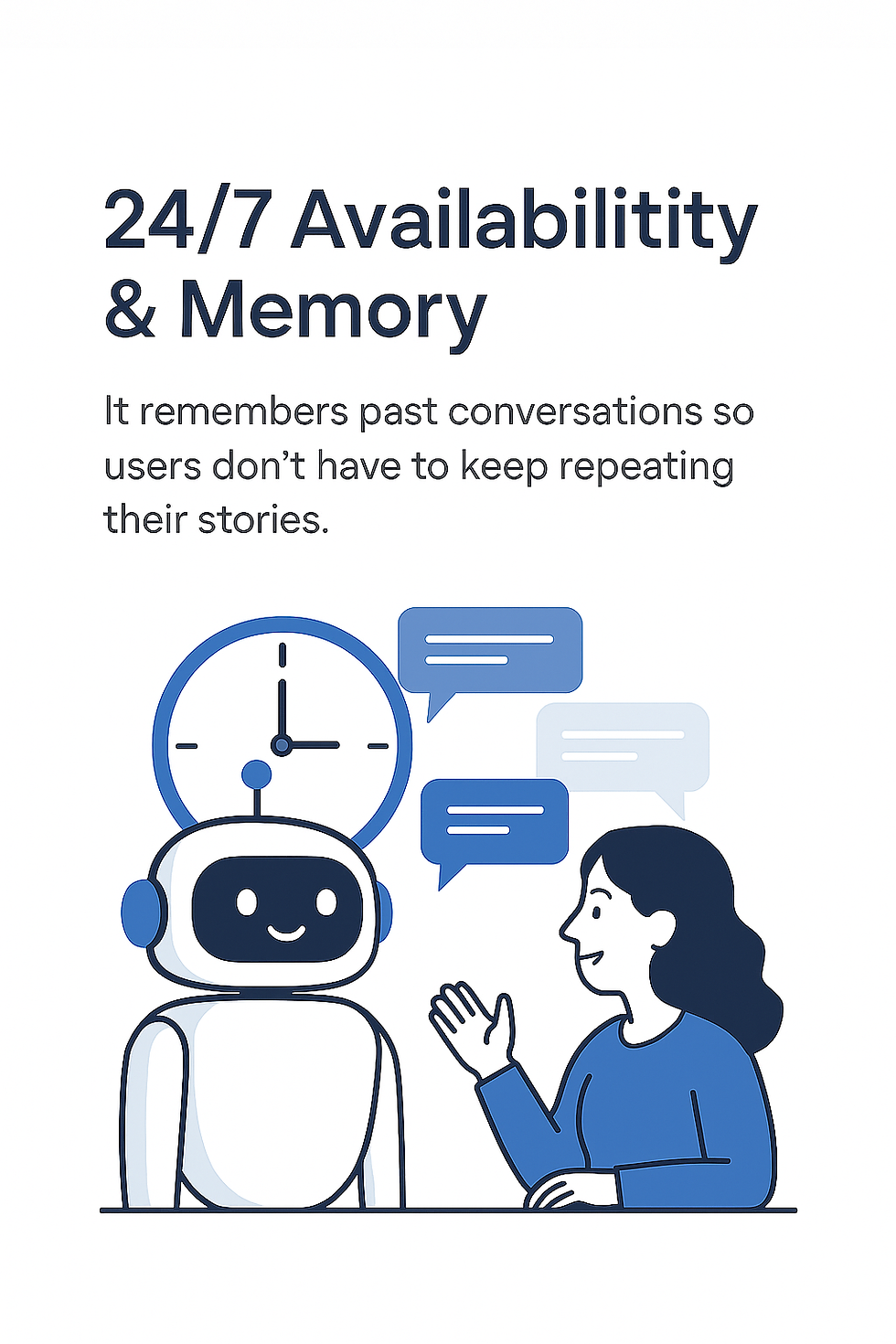What Hapi Delivers
- Yasaman Yazdandoust
- Jul 25
- 1 min read
Updated: Jul 30
Trauma‑Informed, Multi‑Literacy Chat
Hapi “talks” like a person who cares—across 100+ languages, at reading levels that match the user, and with trauma‑informed wording that avoids judgment, shame, or triggers.

Why use trauma‑informed language?
Reduces re‑traumatization. Words, tone, and pacing can re‑ignite shame, fear, or hyper‑vigilance. Gentle prompts (“Would it feel okay to talk about…?”) and choice (“You can skip this if it’s hard right now”) keep people safe.
Builds trust faster. Validation (“What you’re feeling makes sense”) and collaboration (“Let’s figure this out together”) increase disclosure and honesty, key for accurate planning.
Improves follow‑through. When users feel respected, they’re more likely to stay engaged, complete tasks, and reach out before a crisis.
Centers autonomy. Trauma-informed language emphasizes control and consent, countering the loss of agency that people experienced inside.
Why adapt to different literacy levels and use plain language?
Literacy varies widely. Many people leaving prison read below a high‑school level, have cognitive/learning disabilities, or are reading in a second language.
Stress shrinks capacity. Even strong readers struggle under crisis. Short sentences, everyday words, and step‑by‑step instructions cut cognitive load.
Equity and access. Plain language makes the system usable for everyone, as bureaucratic English can be difficult to understand even for highly literate individuals, let alone those under stress.
Fewer errors, fewer delays. Clear instructions mean fewer mistakes on forms, fewer missed steps, and less back‑and‑forth with staff.





Comments